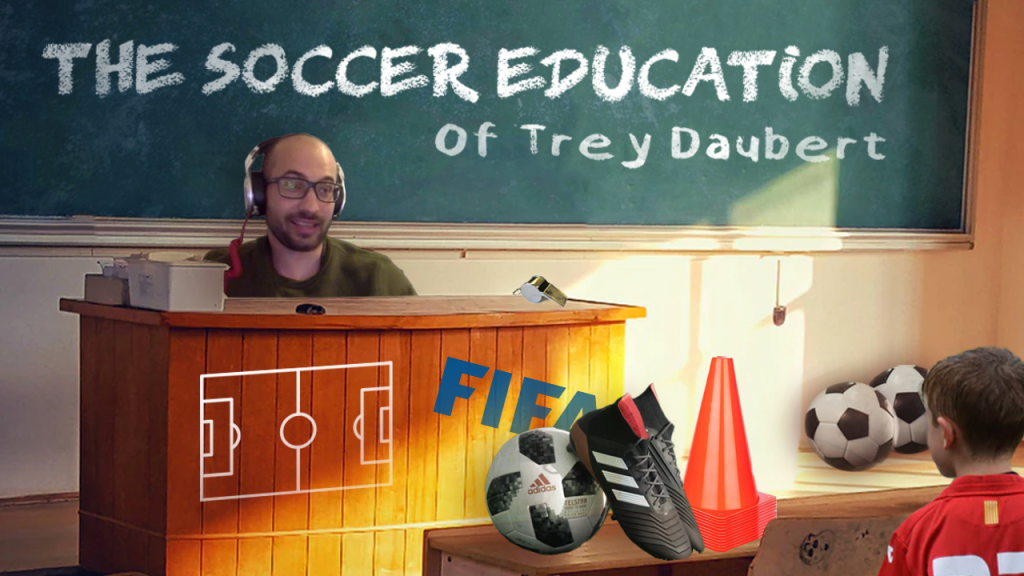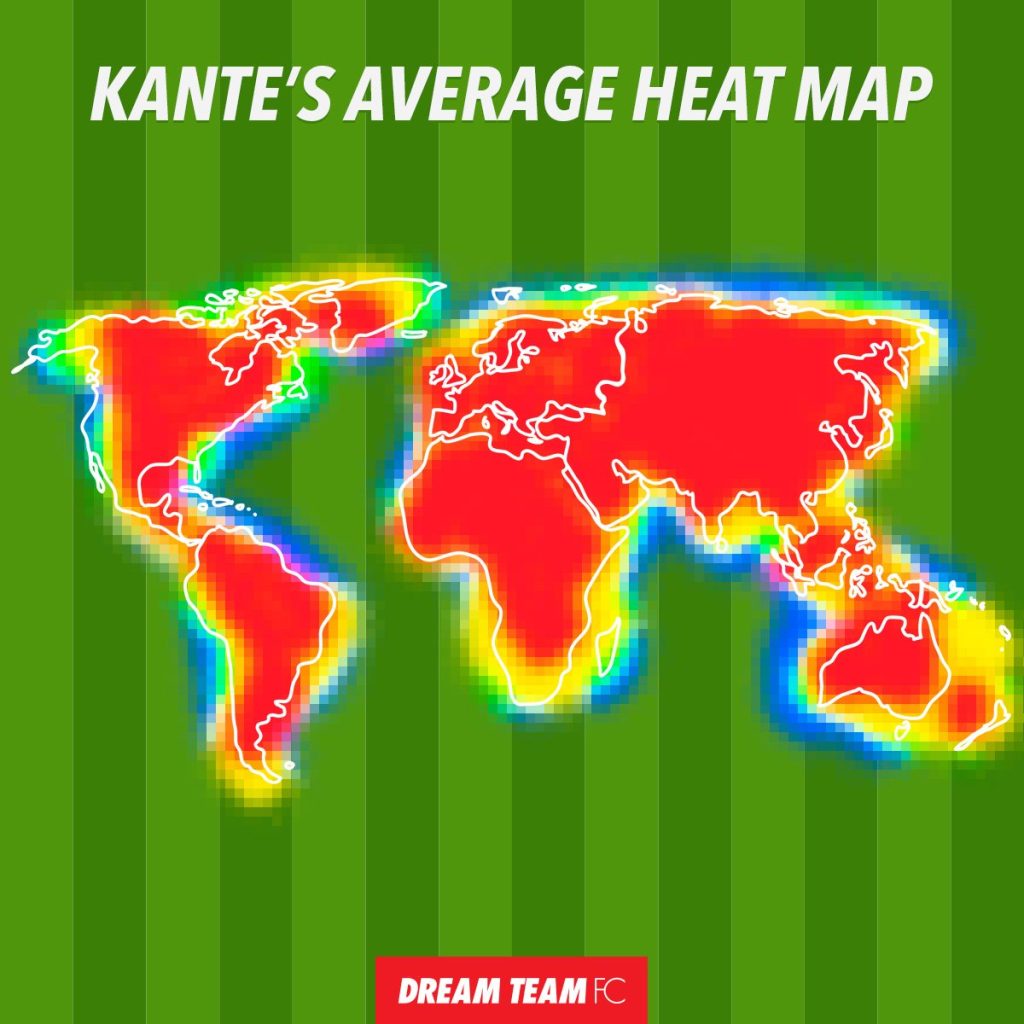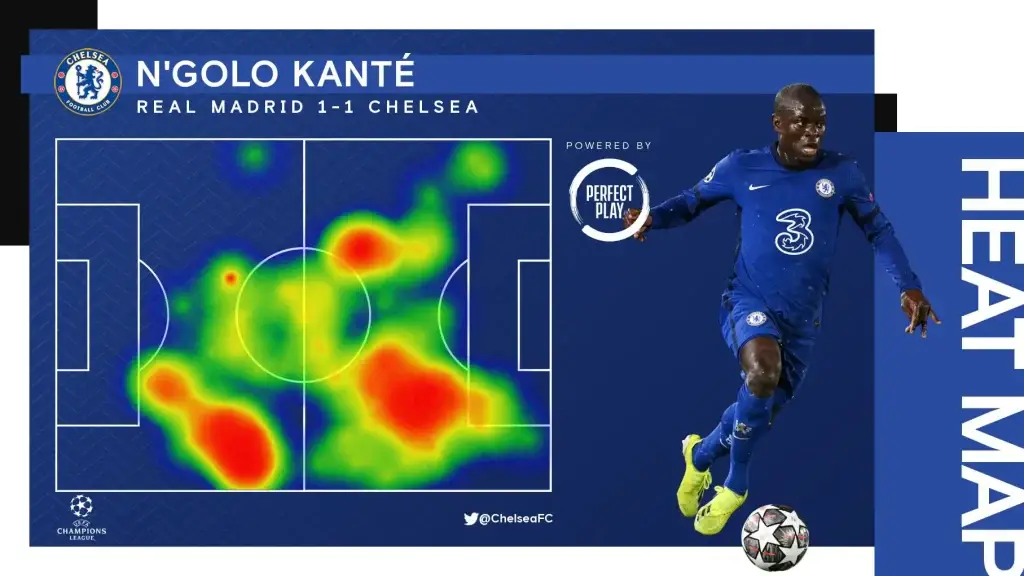Under Maintenance
We deeply apologize for interrupting your reading but Vendetta is currently undergoing some important maintenance! You may experience some layout shifts, slow loading times and dififculties in navigating.

Here we are, Chapter 2 of The Soccer Education of Trey Daubert. In case you are a bit lost on why this happening, go read Chapter 1 to get caught up. All the context you need is in the first installment, along with lesson No. 1: the basics of soccer. However, today we shift gears as we focus on positions in soccer. Positions in soccer can be a complicated subject at times, but I will do my best to keep every explanation as brief as possible. The evolution of Hockey Guy Trey into Soccer Guy Trey continues.
** Abbreviations for each position are in parentheses **

Goalkeeper (GK): The person in between the sticks. They are the only player on the field who can use their hands – unless a player happens to be Luiz Suarez in a World Cup game. You want an agile and intelligent player to lead your team from the back, and if they do a celebratory hip thrust after saving a penalty, that is just an added bonus.
Center-Back (CB): The pair or trio of central defenders who are placed just above the goalkeeper on the pitch. A good center-back pairing typically involves a cerebral player and a bruiser. A center-back leads from the back and covers for the mistakes made in the midfield. One CB typically marks the opposing striker or center forward, while the other covers space in behind. They defend, so it is their job to make tackles, close down passing lanes, and keep a tight line so that no runs can be made in behind on goal.
Full-Back (LB/RB): They are situated on the left and right side of the field in all back four formations – described as left and right back for obvious reasons. They operate as the wider position defenders, typically marking the wingers or outside forwards of the opposing team. Their definition of how to defend is identical to that of center-backs, but they can also join in the attack (in fact, most teams ask this of their full-backs nowadays), though that strategy does leave teams vulnerable to counterattacks from time to time.
Wing-Back (LWB/RWB): Imagine this as a more attacking full-back, because that is all it is. A wing-back is used when a team employs a three-in-the-back formation where the trio of center-backs takes up most of the defensive load, but it requires full-backs to operate in both the attack and defense. Definitely one of the more fun positions to watch.
Defensive Midfielder (DM/CDM): They just want to hit people and win the ball back. They typically sit further back and defend their goal, rather than pushing forward. Very physical and intelligent.
Central Midfielder (CM): The team’s leader. They aid in both the attack and defense. They will initiate play, regain or control possession, and make runs into the 18-yard box when the wingers have the ball. Similar in some ways to the quarterback of a football team.
Box-to-Box Midfielder (B2B): They can create. They can defend. They have bundles of energy. They are swiss army knives. N’Golo Kante is probably the best box-to-box midfielder in the world, although he breaks the traditional mold of what attacking means as a B2B. This is what his heat map looks like after a game:

Whoops, sorry, I got ahead of myself, it actually looks like this:

Holding Midfielder: Similar to a defensive midfielder, as they often operate in the same area, yet not as defensively inclined or physically imposing. They are very cerebral and can regain the ball when it is lost by the attackers, but often make the simpler passes in order to maintain possession. These midfielders are a calming presence. Jorginho, who plays for Chelsea and Italy, is a good example of what a holding midfielder should be.
Central Attacking Midfielder/#10 (CAM/#10): This notation is due to the game FIFA, but a central attacking midfielder typically sits just below the striker in a four-in-the-back formation. They rarely defend and operate a lot in the attacking third. Typically very creative and can score/assist from any number of spaces. While Messi typically sets up shop on the wing, he is a #10 through and through.
Left Midfielder (LM): Operating on the left side of the pitch as the name would suggest. They are offensively inclined, make runs along the sideline, and can cut in towards the center of the field or whip balls into the box for their attackers.
Right Midfielder (RM): Exactly the same as a left midfielder, just on the other side of the field.
Note that these are the most common midfield positions used in soccer, so more intricate positions like “deep-lying playmaker” and “False 10” were not included. Feel free to look them up, or I can explain them in another chapter if you truly want to know every position in the midfield. However, the ones included above are the tried and true positions used most frequently.
Center Forward: The main man up front. They are employed to score goals and that is what they want to do. However, the difference between them and strikers is that center forwards are more crucial in the build-up play for a team’s attack. Both are eager to put the ball in the back of the net though. They should be good in the air, accurate with both feet, and strong on the ball. Ronaldo is a center forward and winger.
Striker: Does a lot of the same things as a center forward, including roaming around the 18-yard box in search of a pass or shot, but they are typically a target man. They make runs in and behind the defense in order to get the ball in an area where scoring a goal is more likely. Zlatan Ibrahimovic is the epitome of a modern-day striker.
Winger (LW/RW): An outside attacker who does much of their work along the touchline. Very strong on the ball and possessing great technical skills, they can create chances for the center forwards or can score themselves. They are inherently creative and the best of the best are absolutely clinical in front of goal. Notable wingers today: Messi, Neymar, Salah, and America’s great hope, Christian Pulisic.
Left Forward: More inverted than a winger, but with a similar role, as they operate further towards the touchline. They should link up well with the other attackers, have solid technical ability, and be able to finish from any number of areas inside and just outside the penalty area.
Right Forward: See left forward for detailed analysis. Just stick them on the opposite side of the pitch.
False 9: Extremely successful during Barcelona’s dominance between 2009 and 2012. Manager Pep Guardiola played Messi as a “false 9” for the team, having the Argentine drop into the midfield to outnumber the defense, whilst allowing the wingers/forwards more room to run in behind the opposition. When given the ball, the false nine inherently has so much space that opposing center-backs have to choose whether to follow the runs of the wingers or step to the player who has the ball – and when that player was Messi, you can imagine the dilemma. If you want a video illustrating what a false 9 looks like, enjoy the left-footed wonder terrorizing Real Madrid.
Well, here concludes another chapter of The Soccer Education of Trey Daubert. Another chapter will be out next Wednesday, so get excited for that. Maybe there will be a quiz, maybe not. But for now, the bell has rung and class is dismissed.
***
Vendetta Sports Media is sponsored by Monkey Knife Fight, the fastest growing DFS site in the industry. MKF’s unique style and gameplay make betting fun and easy. Use our promo code ‘VENDETTA’ or use the link below to get a 100% instant match on any deposit and let them know that we sent you!
Signup now!
Check out the Vendetta Twitch!!
SUBSCRIBE to the Vendetta YouTube!!